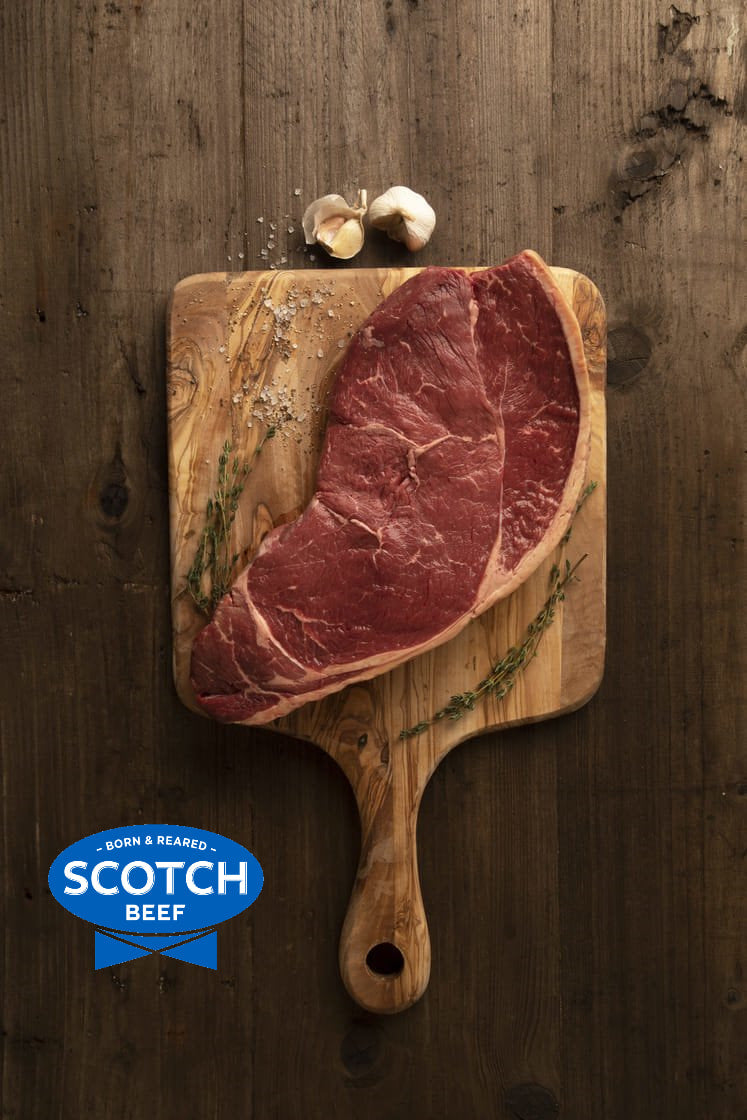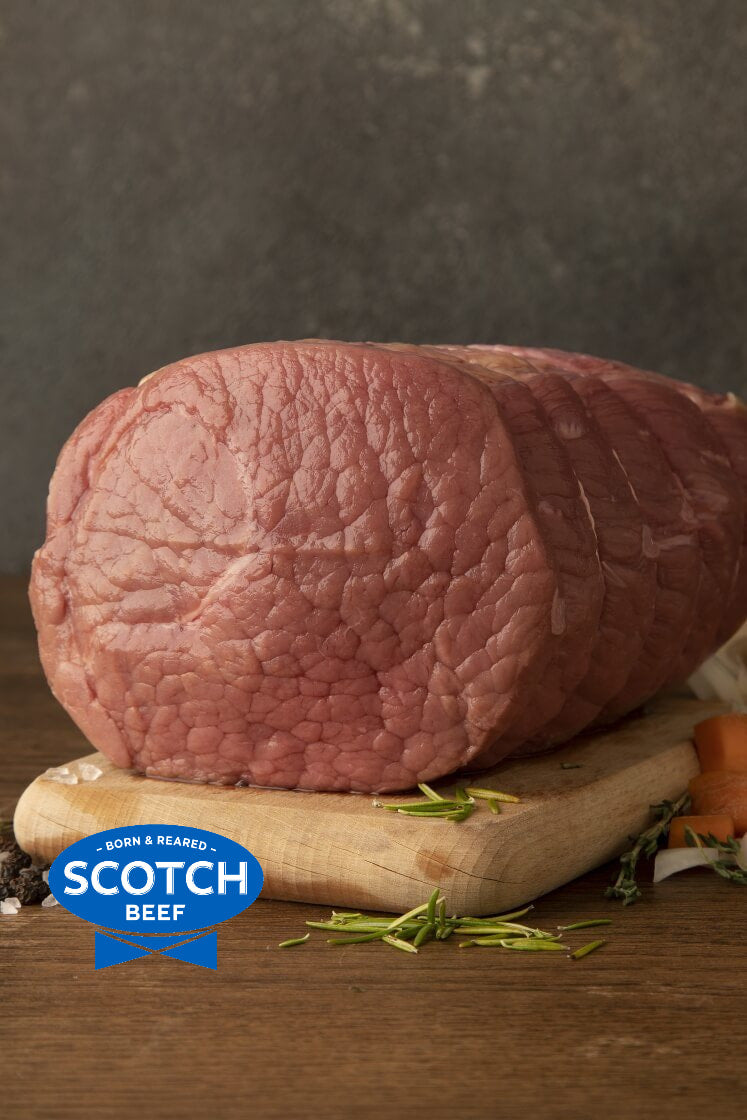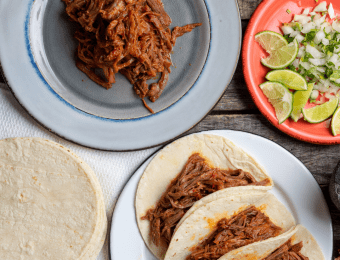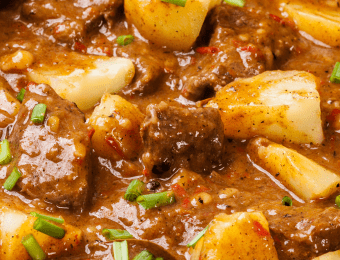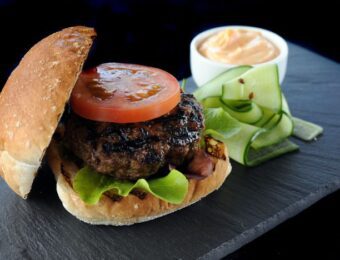Beef Cuts
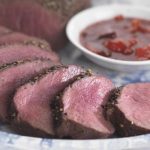
Ox Cheek
Ox Cheek is a cut of beef that is taken from the very large cheek muscles of the cow. As beef cheeks are used very often by the animal, the tissue that develops is extremely tough and has a fair amount of connective tissue. However, when treated with a little bit of care and attention the results can be superb.
Having seen a recent resurgence in popularity, the trick to making a perfect ox cheek dish is the cooking method. Braised ox cheeks placed in a casserole dish and slow-cooked with red wine make a show-stopping dinner party dish that is sure to impress your guests, and better yet, it is a mouthwatering meal that can be made with minimal effort as our ox cheek recipe demonstrates.
Chuck
The chuck area of beef cut is one of the primal cuts and comes from the forequarter of the cow. This includes parts of the neck muscles, across the shoulder blades, and the top of the front legs.
These large muscles produce economical cuts of beef that are extremely flavourful and are excellent for stewing and braising. When diced it is wonderful in casseroles and stews. Daubes are large thick chuck steaks and are excellent when slow-cooked.
Featherblade is a popular choice from the chuck area, and is a perfect joint for long and slow braising until it gains a melt in the mouth texture. Flat Iron steaks are also from this cut of beef and are extremely versatile with a rich and deep flavour. Minced and diced meat from this region is extremely popular. The steak mince from this area is commonly used in burgers and bolognese due to the balance of texture and flavour, and all diced beef makes an excellent option for stews and casseroles.
Fore Ribs
Fore Rib is a prime area of beef from which a number of premium cuts of beef can be taken. The fore rib on a cow is taken from the first five rib bones.
Our Carvery Rib of Beef is a classic beef roasting joint that is as delicious as it is spectacular to look at. As well as providing a grand visual impact, cooking on the bone results in a roast that is full of flavour and tenderness, with just enough fat to keep the meat moist.
Smaller rib pieces are excellent choices for smaller groups, and a boned and rolled rib joint also makes for an incredibly tasty roast that easier to prepare, cook, and carve.
A single trimmed Carvery Rib Eye Steak (more commonly known as a Cote de Boeuf) makes a luxurious steak for two to share. Also cut from the fore rib are the ever-popular succulent and flavourful Rib Eye Steaks
Sirloin And Fillet
There is a beautiful myth that an English king, deeply impressed by a piece of beef loin he dined on, knighted the meat ‘Sir Loin’. Although this is just a legend it is true that the Sirloin area produces some of the most delicious, tender and highly prized cuts both for roasting and frying.
Sirloin is a prime roasting joint for a larger number of guests. The lightly marbled meat is tender and contains no visible fat. However, a protective layer of fat sits on top and ensures that the meat remains flavoursome and succulent when roasting.
Another premium option is the Sirloin with undercut attached, where the fillet is still attached to the other side of the bone. The T-bone Steak is a slice of this cut with the sirloin on one side and a fillet portion on the other side of the bone. The boned Sirloin is the Striploin, trimmed of just the right amount of fat for rich flavours and to retain moisture when cooking. The elegant and tender Sirloin Steaks are cut from the Striploin.
Other cuts from this area are big, meaty and boneless Porterhouse Steaks. A popular option in American style steakhouses, these are cut from the rump end of the Striploin. Where the sirloin meets the forerib sits the Wing Rib, which makes a wonderful joint on the bone, almost as tender as the fillet and with less fat than options cut from the forerib.
The Fillet – the most tender and most luxurious cut of Beef – runs on the inside of the sirloin down to the rump. The thick top end or head of the fillet is the Chateaubriand, best cooked as a small Miniroast, the flat, thin end or tail is usually sliced and sold as Stroganoff. The supremely tender centre part can be either used whole as a roast, or cut into Fillet Steaks, or sliced and used as Fillet Strips.
Rump
The muscle above the hipbone is the Rump, at the back end of the cow. These muscles get a lot of work, so the meat is extremely full of flavour and has a rich texture. The meat is also extremely versatile and cuts from this area can be used as both roast and steak options.
Rump roasts are a popular roasting joint, and rump steaks make a fantastic steak dinner option that is excellent value for money. Another rump steak cut is the pavé which is an extremely flavourful steak. Cuts from the rump are very common in South America, and so we have recently started supplying both Picanha roasting joint and Picanha steak (also known as rump cap) options for purchase. These are perfect for cooking then slicing into thin strips, then serving with grilled vegetables, salads, or wraps.
Also from this region are Minute Steaks, which are ideal for both indoor and outdoor grilling and make the most sumptuous steak sandwiches.
Topside and Silverside
Silverside is leaner than Topside and can be used as inexpensive roasting joint, but the lean meat yields much better results as a slowly cooked pot roast. Steaks cut from the Silverside make excellent, tasty Braising Steaks.
Traditionally sold rolled and tied, Topside makes a good, roasting joint full of beefy flavours. As a working muscle the meat is fairly lean and should be roasted gently, still pink at the centre. It is very versatile, makes a very good pot roast and can be braised or boiled. Thin slices of Topside make ideal Minute Steaks for flash frying.
Brisket
A firm, but fairly fatty forequarter cut that is usually sold boned and rolled. Brisket makes a delicious pot roast or can be braised or poached. A good inexpensive cut for stewing and slow cooking.
Fore Quarter Flank
The flank is divided into Hindquarter Flank and Forequarter Flank. Both provide very flavoursome, fatty, fairly tender and inexpensive meat options. Cuts from this area can be stewed, grilled, and fried.
Flank Steaks are popular in Asian cuisine, and the most commonly found cut is the Hanger Steak.
Shin
A bargain cut from the foreleg with rich, full and deep flavours. Best slowly braised for at least 4 hours, until the meat is meltingly tender. Beef Shin is now popular in high end restaurants either cooked on or off the bone.
Diced Beef Shin is also prised as a stewing option.
Hind Quarter Flank
The flank is divided into Hindquarter Flank and Forequarter Flank. Both provide very flavoursome, fatty, fairly tender and inexpensive meat options. Cuts from this area can be stewed, grilled, and fried.
Flank Steaks are popular in Asian cuisine, and the most commonly found cut is the Hanger Steak.
Thick Flank
Thick Flank or Top Rump (English), not to be confused with Rump, is a lean and tough cut above the leg. Good for braising.
Leg
The leg yields rather tough and lean meat than needs to be cooked long and slowly. Occasionally sold for braising or mincing.
Oxtail
Oxtail is probably the most flavoursome and the most inexpensive beef cut available. With its deep, rich flavours it has become a favourite with high end restaurants. It is normally sold cut into segments between the tail bones and should be gently stewed for several hours, until meltingly soft.

Hand Diced Scotch Beef Stewing Steak
£11.50 2026-01-01T00:00:00.000Z instock /product/hand-diced-scotch-beef-stewing-steak.html108 Reviews

Campbells Gold Ribeye Steaks (2 x 230g)
£44.00 2026-01-01T00:00:00.000Z instock /product/campbells-gold-rib-eye-steaks-2-x-230g.html3 Reviews

Scotch Beef Ribeye Steak Twin Pack
£36.00 2026-01-01T00:00:00.000Z instock /product/scotch-beef-ribeye-steak-twin-pack.html9 Reviews
Edward's Angus Beef Sirloin Steak Special Trim Twin Pack
£24.00 2026-01-01T00:00:00.000Z instock /product/edward-s-angus-beef-sirloin-steak-special-trim-twin-pack.html31 Reviews

Campbells Gold Premium Dry-Aged Sirloin Steaks Special Trim (Pack of 2)
£44.00 2026-01-01T00:00:00.000Z instock /product/campbells-gold-premium-dry-aged-sirloin-steaks-pack-of-2.html10 Reviews
- No Products
- No Products

Specially Selected Smoked Gammon Bone In
£52.00 2026-01-01T00:00:00.000Z instock /product/specially-selected-smoked-gammon-bone-in.html33 Reviews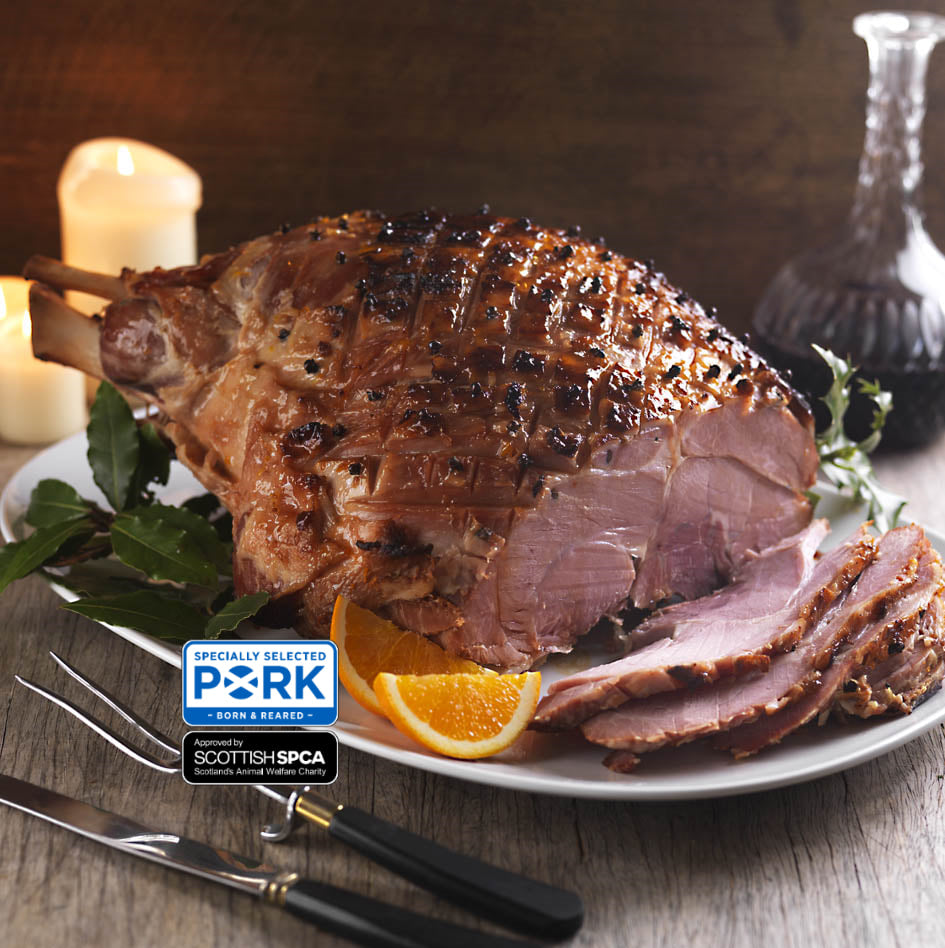
Specially Selected Gammon Bone In
£44.00 2026-01-01T00:00:00.000Z instock /product/specially-selected-gammon-bone-in.html73 Reviews
- No Products
Related recipes
- 0
- 1
- 2
- 3
- 4
- 5



